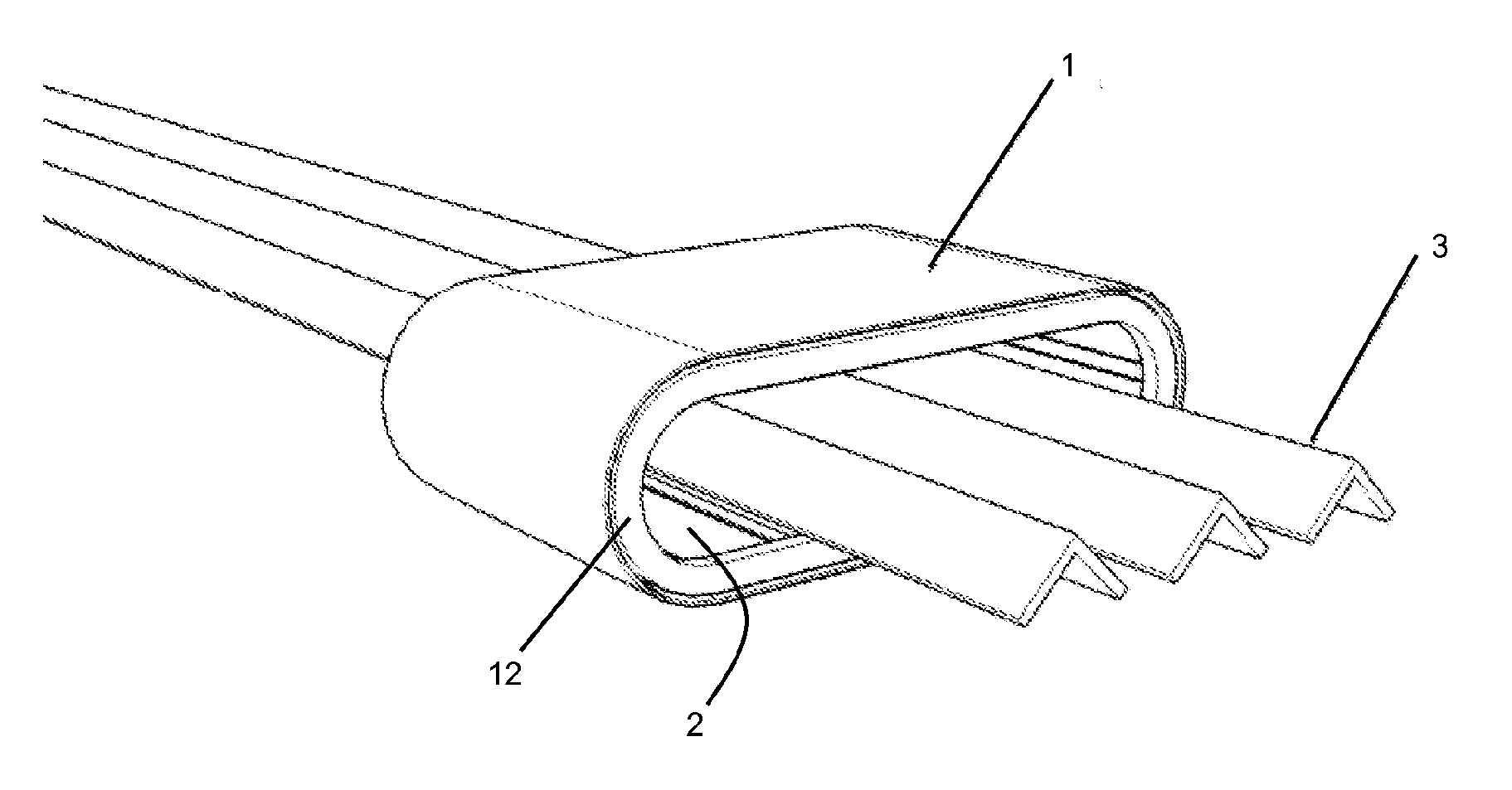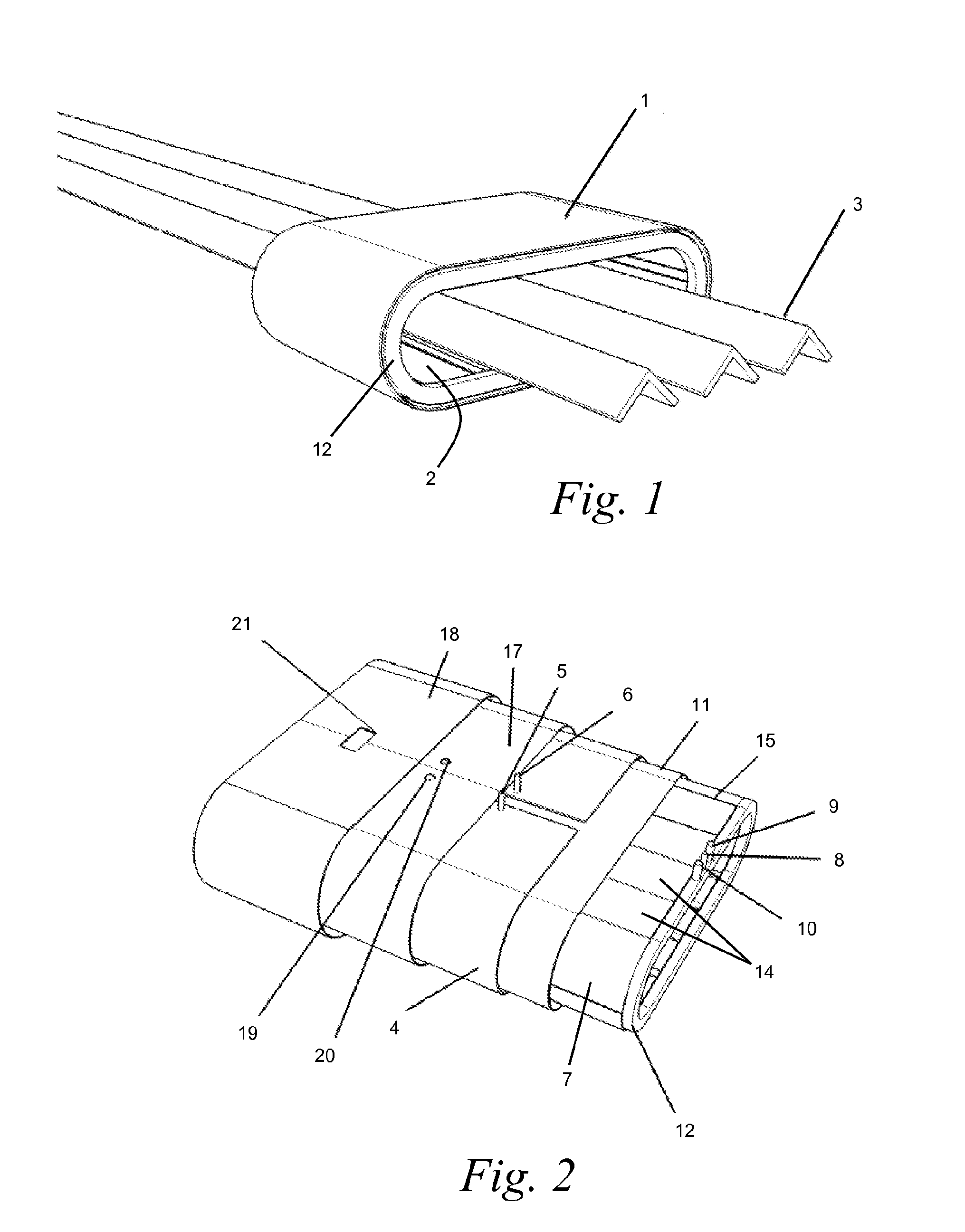Method and device for the plasma treatment of running metal substrates
a metal substrate and plasma treatment technology, applied in plasma technique, plasma welding apparatus, manufacturing tools, etc., to achieve the effect of reducing surface resistance, reducing surface resistance, and minimizing losses by joule
- Summary
- Abstract
- Description
- Claims
- Application Information
AI Technical Summary
Benefits of technology
Problems solved by technology
Method used
Image
Examples
Embodiment Construction
1. The Device According to the Invention:
[0038]A device according to a particularly interesting embodiment of the invention is shown schematically in FIGS. 1 to 3. This device 1 is mounted in a vacuum chamber and comprises a treatment area 2 in which one or more metal substrates can travel substantially continuously. This treatment area 2 is situated inside the device.
[0039]In FIG. 1 a device is shown through which three metal girders 3 move, parallel to one another, in their longitudinal direction. The girders 3 are supported by banks of rollers, which are not shown in the figures, upstream and downstream of the treatment device.
[0040]The device has means for generating a plasma in the treatment area 2. These means comprise among other things an inductor 4 coupled to a radio-frequency generator for generating a plasma in the treatment area 2 by radio-frequency inductive coupling. The inductor 4, which at least partially surrounds the treatment area 2, is advantageously formed by a ...
PUM
| Property | Measurement | Unit |
|---|---|---|
| Distance | aaaaa | aaaaa |
| Distance | aaaaa | aaaaa |
| Distance | aaaaa | aaaaa |
Abstract
Description
Claims
Application Information
 Login to View More
Login to View More - R&D
- Intellectual Property
- Life Sciences
- Materials
- Tech Scout
- Unparalleled Data Quality
- Higher Quality Content
- 60% Fewer Hallucinations
Browse by: Latest US Patents, China's latest patents, Technical Efficacy Thesaurus, Application Domain, Technology Topic, Popular Technical Reports.
© 2025 PatSnap. All rights reserved.Legal|Privacy policy|Modern Slavery Act Transparency Statement|Sitemap|About US| Contact US: help@patsnap.com



